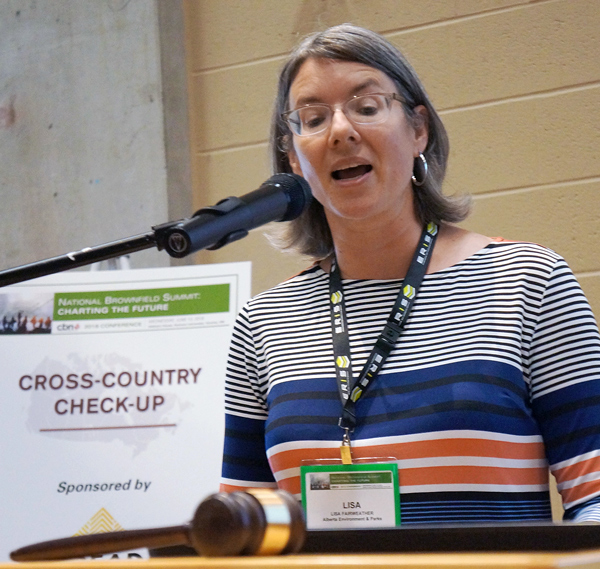The changing regulatory landscape for excess soils that require remediation was the topic of a cross-country checkup session at the National Brownfield Summit: Charting the Future, held in Toronto recently.
Krista Barfoot, of Jacobs Engineering Group, a consultant to the province of Ontario, said an improved excess management soil process in Ontario is moving ahead under a new phased-in regulation, which is a positive step that will require developers to have an excess soil management plan (ESMP). The regulation aims in part to curb the dumping of contaminated soils onto rural and agricultural lands which has been a growing problem.
Under the regulation, an ESMP will be required when soil exceeds a certain volume, generally more than 2,000 cubic metres, or originates on industrial property or specific commercial lands, she said.
Among the exemptions to the ESMP are when soil is being removed in an emergency where time is critical or when soil is required to repair infrastructure.
The first phase of the regulation is set for January 2020, with the remaining portion to kick in a year later.

Barfoot told a packed auditorium at Ryerson University the regulation — which is an updated version of one proposed over a year ago — offers developers flexibility, “an out” in some cases of the “full requirements of the ESMP.”
But the regulation will still require the identification of contaminated soil areas and soils that can be “beneficially reused” from a redevelopment site, she explained.
She said feedback from stakeholders and clients indicated there is a lack of “beneficial reuse sites” and that the regulation does not have specific considerations for the tunnelling industry.
“It’s a gap in the regulation that might need a closer look,” she said.
Barfoot told delegates enforcement measures by the province are under review.
The B.C. government is moving its front-end administration to the back end to ensure developers meet their obligations with excess brownfield soils, said Kerri Skelly, of the B.C. Ministry of Environment and Climate Change Strategy.
The province is also assessing the possibility of closing high-volume soil receiving sites, which are often just outside major urban redevelopment areas, she told delegates.
Soil relocation provisions were established by the B.C. government to create consistent regulations that include industrial soil reuse opportunities. Prior to that, regulations were set by municipal governments, leaving developers with different and sometimes costly standards to meet across B.C., said Skelly.
In some cases, developers were sending soils to landfills.
“Soil shouldn’t be going to landfill,” she said.
Skelly told delegates B.C. will establish a database for the public on all notifications for details on excess soil removal from development sites.

Alberta’s remediation regulation is being updated, driven primarily by high development costs and a lack of environmental and regulatory certainty, said Lisa Fairweather, the brownfield co-ordinator for the Alberta government.
One the highlights of the amended regulation, effective January 2019, is a voluntary “site-based” remediation certificate that allows property owners to remove liability for a given area of a property, opening the door to a land sale or bank financing for development.
Formerly, the certificate required an “area-based” (whole property) remediation.
“If you choose to remove regulatory liability then you may earn this voluntary site-based certificate,” said Fairweather.
She said where remedial measures are required, the province requires owners to complete it in two years or submit a plan for remediation which could be extended over a number of years, to give the province comfort if the owner sells the property.
The brownfield conference was presented at Ryerson University in downtown Toronto by the Canadian Brownfields Network, a national network of multi-disciplinary industry professionals looking at brownfield barriers and potential solutions.











Recent Comments
comments for this post are closed